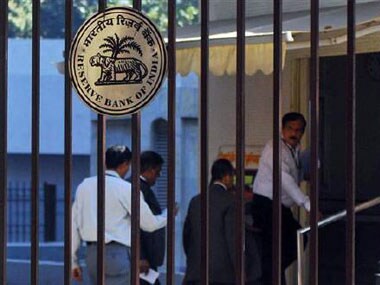The controversy over the fresh monetary policy framework, as envisaged in the revised draft of the Indian Financial Code (IFC), was put to rest on Tuesday when Reserve Bank of India (RBI) governor Raghuram Rajan assured that the government and the central bank are on the same page with respect to the formation of the proposed structure of the Monetary Policy Committee (MPC). In fact, Rajan went on to detail the benefits of terminating the veto power of one individual, the RBI governor, in the process of monetary policy formation and hand over the decision making process to a group of experts under the proposed MPC. A panel is less prone to commit errors than an individual, Rajan said. Even now, the government indeed has the right to advise RBI on monetary policy under the RBI Act, something that the government has never used so far, Rajan said. There is a broad agreement between the RBI and government on the proposed structure of the Monetary Policy Committee (MPC), Rajan said. [caption id=“attachment_2379526” align=“alignleft” width=“380”]  The RBI has navigated the economy safely through rough waters during 2008 crisis[/caption] The point here is that there was never any disagreement between the RBI and the government on whether the governor’s veto power should be done away with. The very idea of the central bank agreeing to the MPC framework in the first place was to migrate to a panel-structure on policy formulation. Even the Urjit Patel committee recommendations on monetary policy framework didn’t have a veto power to the governor, but only a casting vote “in situations arising on account of unforeseen exigencies necessitating the absence of a member for the MPC meeting in which voting is equally divided. But, post the revised IFC draft, the veto issue assumed critical since the draft recommended a panel with majority strength for members from the government’s side. In the post-policy presser, Rajan didn’t comment further on the structure of the MPC, before it is officially announced, even though he repeated that there are no differences on the issue. One can hope that the government would be coming up with an MPC structure, different from the one proposed in the revised IFC draft and something comfortable for the central bank. The government couldn’t have worsened the situation after Financial Legislative Reforms Legislation Commission (FSLRC) disowned the revised draft, making it clear that the controversial changes made in the revised draft was the work of the government. Already, international rating agencies have cautioned on government hijacking monetary policy from the central bank. Last week, Moody’s Analytics had cautioned that tampering with the RBI’s independence would hurt India’s economic prospects. “We believe that a government-elected panel undermines the RBI’s independence. Moving to the new model would severely dent the RBI’s competency: Credibility would be lower, politics would drive decisions, and transparency would be reduced,” Moody’s warned. With the FSLRC distancing itself from the revised draft, the finance ministry will likely find itself in a difficult position to continue with its earlier defence that it doesn’t have anything to do with the controversial changes made in the revised draft of the financial code. There was indeed an attempt from the government to have dominant say in monetary policy. It’s a welcome move if the Narendra Modi government listens to the concerns raised by experts including former RBI governor C Rangarajan about the harms of undermining the RBI’s power and announce a structure that augurs well for the financial system. It is illogical to assume that the central bank with limited powers in MPC can fulfil its mandate of inflation control. For sure, it makes sense to develop India’s monetary policy mechanism at par with global standards. Most developed economies in the world have MPCs in place and the decisions are taken by that MPC, not an individual. But, what is critical is the quality of the proposed MPC. If the panel is majority filled with bureaucrats, who sing the tune of the political leadership, one can’t expect an independent monetary policy process, since the governments tend to looks at the short-term priorities, while the central bank’s views are framed towards long-term impacts. This can put the economy in trouble in the long-term. If the government ensures that the MPC is constituted with independent, quality minds, then there is no harm even if the central bank doesn’t have veto power. But then the quality is highly subjective. What the government nominees think right might not be the same view of the central bank representatives. It is dangerous to take a chance on the issue of monetary policy and experiment with a government dominated panel, assuming that it will take independent decisions. Damage once done due to wrong monetary policy decisions cannot be undone easily, as is proved by the mistakes committed by central banks in the western world. It is safer to give the central bank majority in the MPC and grow the framework over years. The Indian central bank has a brilliant, proven track record that has navigated the economy safely through rough waters, especially during the 2008 global financial crisis, when the rest of the world collapsed.
It is safer to give the central bank majority in the MPC and grow the framework over years
Advertisement
End of Article


)

)
)
)
)
)
)
)
)



